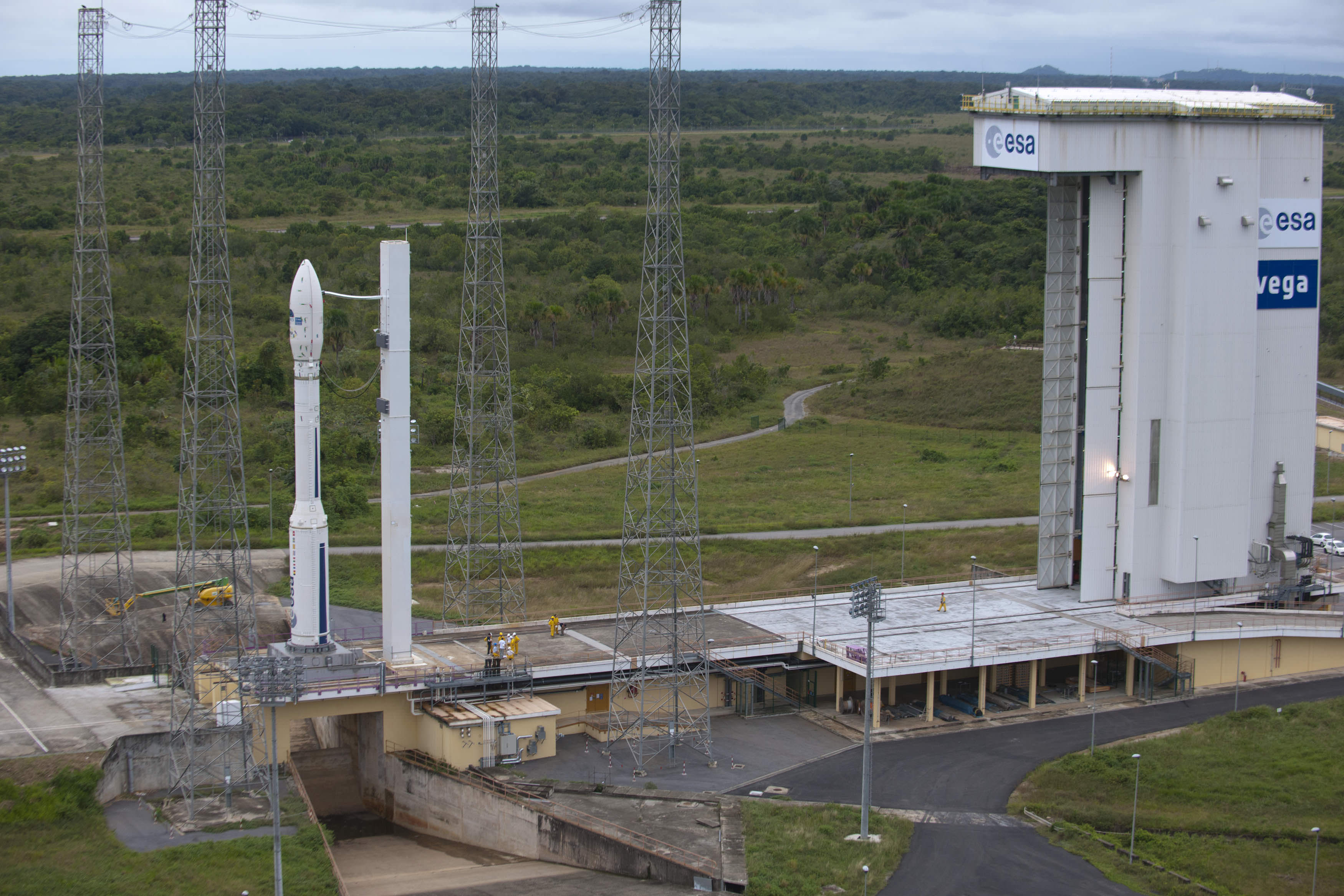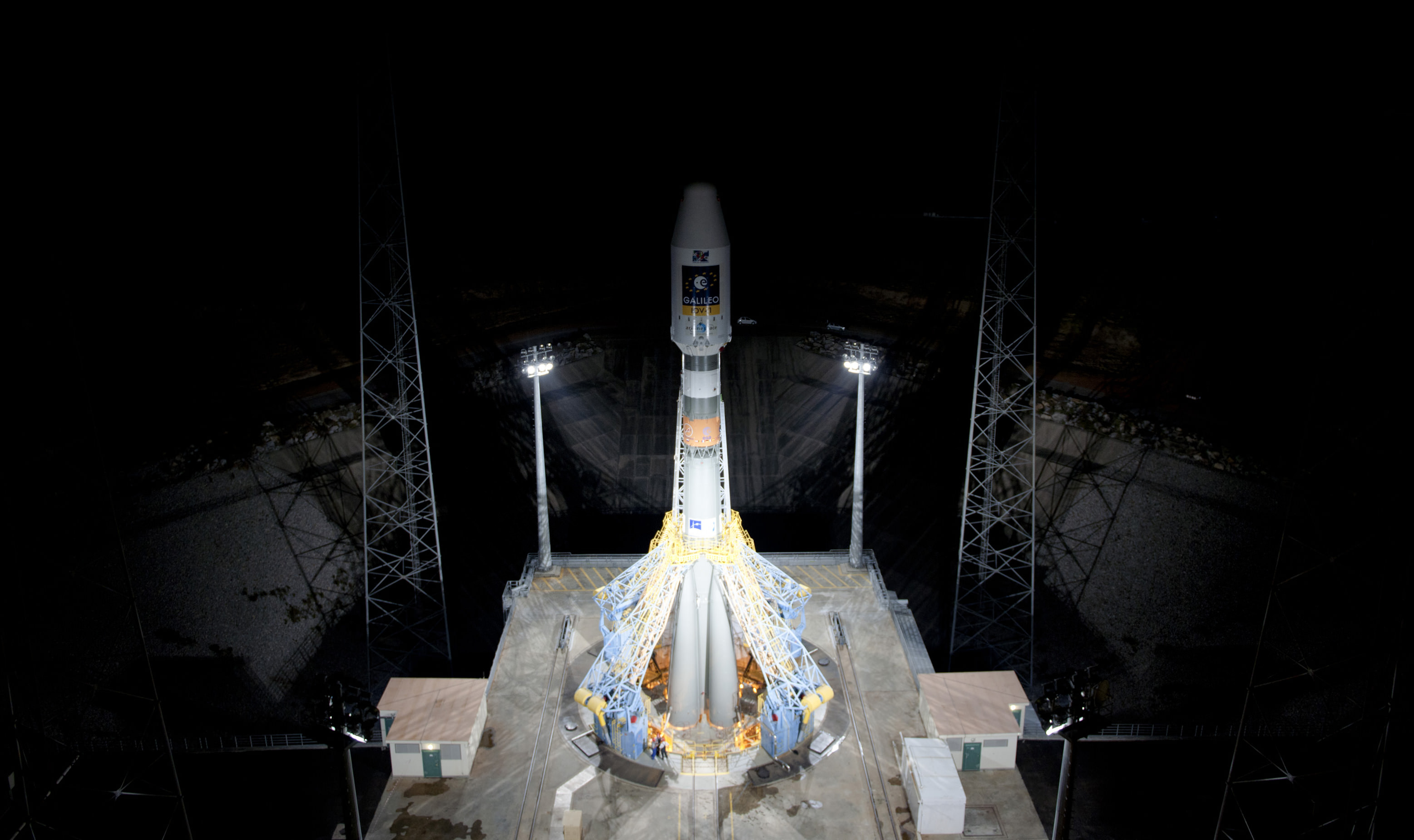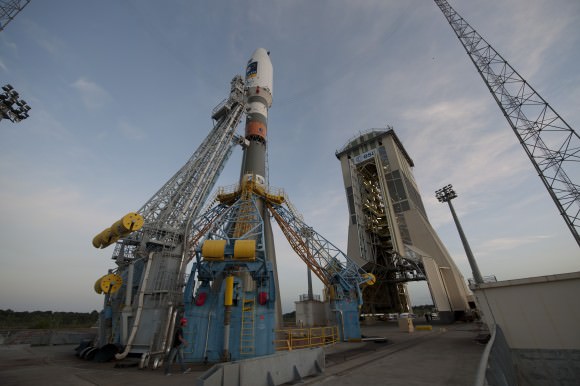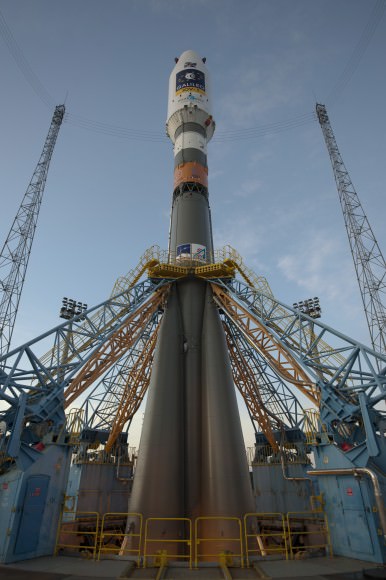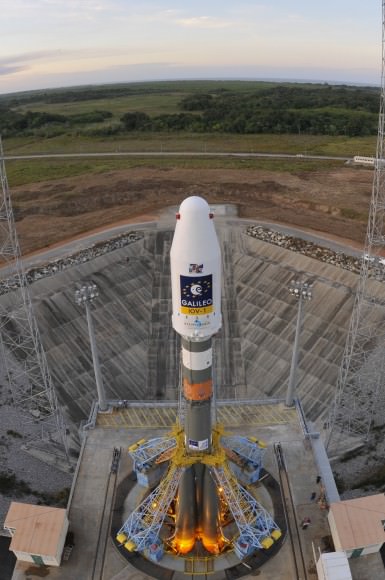[/caption]
Final preparations are in full swing for the inaugural flight of Europe’s new light launcher – the Vega booster – from the European Space Agency’s (ESA) Spaceport in Kourou, French Guiana. Launch crews are preparing the new rocket for blastoff as early as Feb 9, 2012 from the new Vega launch site at Kourou.
Vega has been under development for 9 years by ESA and its partners, Italian space agency ASI, French space agency CNES and industry.
The 30 meter tall Vega will join ESA’s venerable Ariane rocket family and the newly inaugurated Soyuz as the third class of booster rockets to launch from ESA’s rapidly expanding South American Spaceport at the Guiana Space Center.
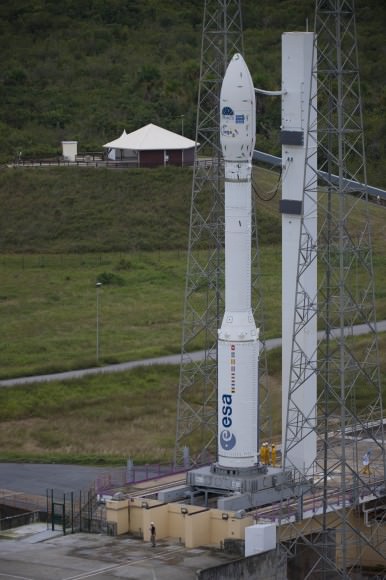
This gives ESA an enormous commercial leap and wide ranging capability to launch all types of satellites from small to big and heavy.
The 4 stage Vega rocket is now fully assembled at the launch pad for the initial qualification flight dubbed VV1. The launch window stretches for a few days beyond Feb. 9.
The Vega VV1 qualification flight will carry 9 satellites to orbit.
The payloads are housed inside the ‘upper composite’ composed of the payload fairing and adapter and were integrated on top of the AVUM fourth stage by pad workers on Jan. 24, who completed and verified all the electrical and mechanical connections and links.
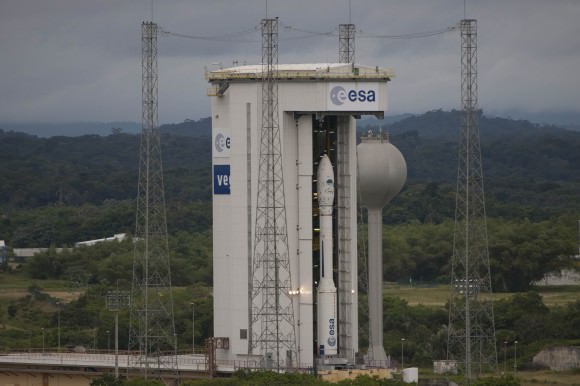
The satellites aboard include the LARES laser relativity satellite, ALMASat-1 from ASI and seven CubeSats from an assortment of European Universities.
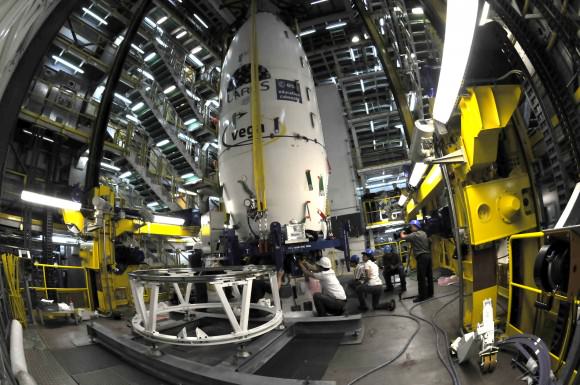
The main tasks remaining before the maiden flight are the final checkout of the assembled vehicle, the last launch countdown rehearsal and the fuelling of the restartable AVUM 4th stage with liquid propellants.
The Vega launch site is located at the previous ELA-1 complex, originally used for Ariane 1 and Ariane 3 missions and has been rebuilt and upgraded.
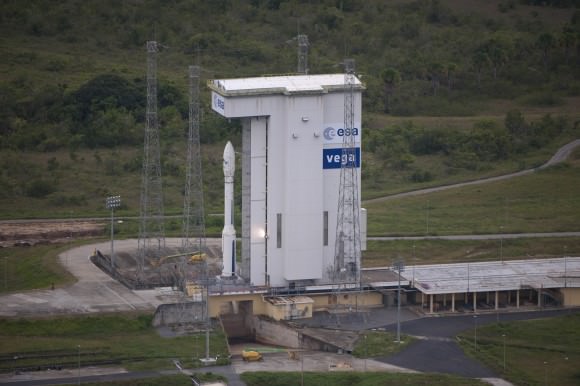
The Vega rocket is specifically designed to fill a market gap in ESA’s satellite launch capabilities, namely the smaller, lightweight science and earth observation satellites.
It can launch payloads ranging from 300 kg to 2500 kg in mass, depending on the customers orbital requirements.
Vega affords ESA full market coverage by complementing the medium and heavy weight payload categories covered by the Soyuz and Ariane V rockets.
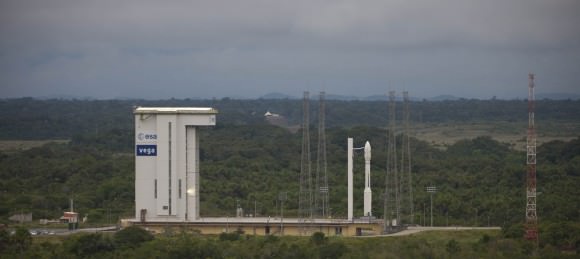
Watch Universe Today for Vega maiden launch coverage and special launch pictures

